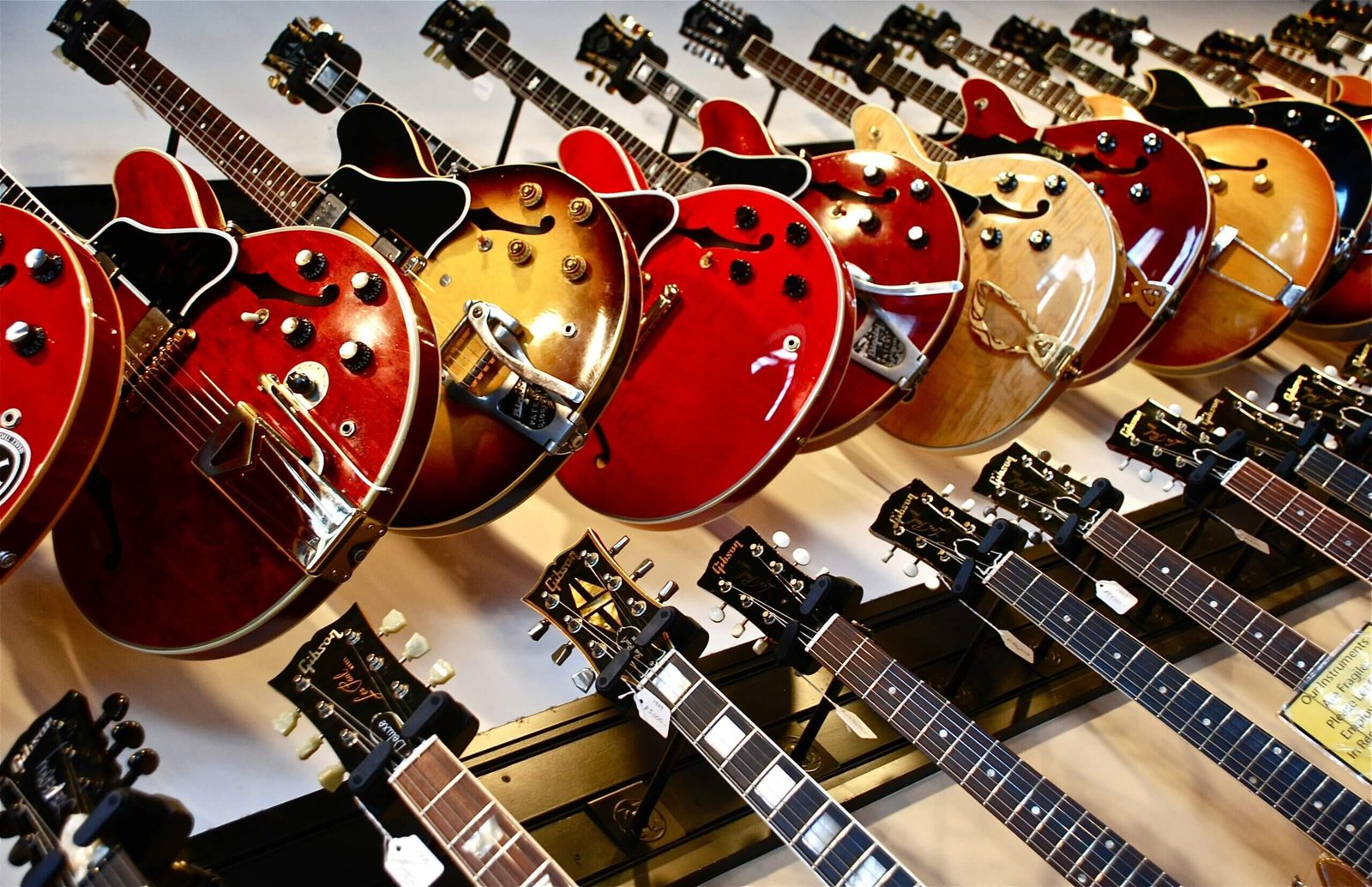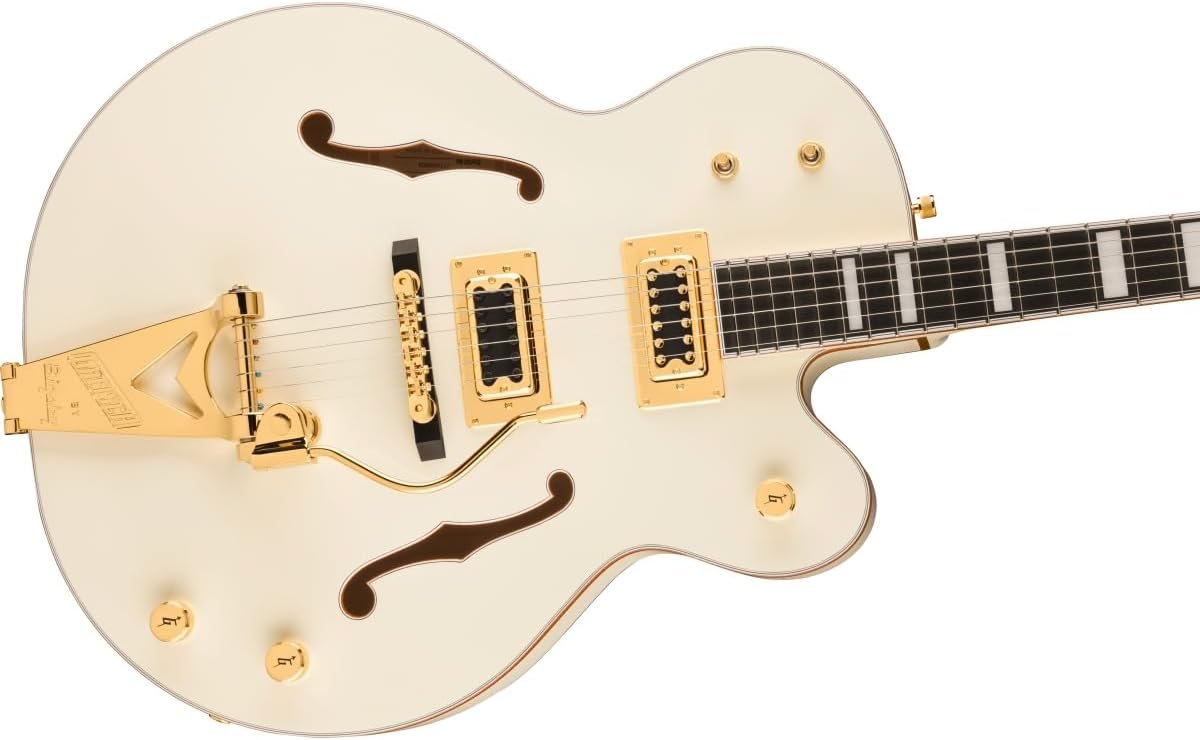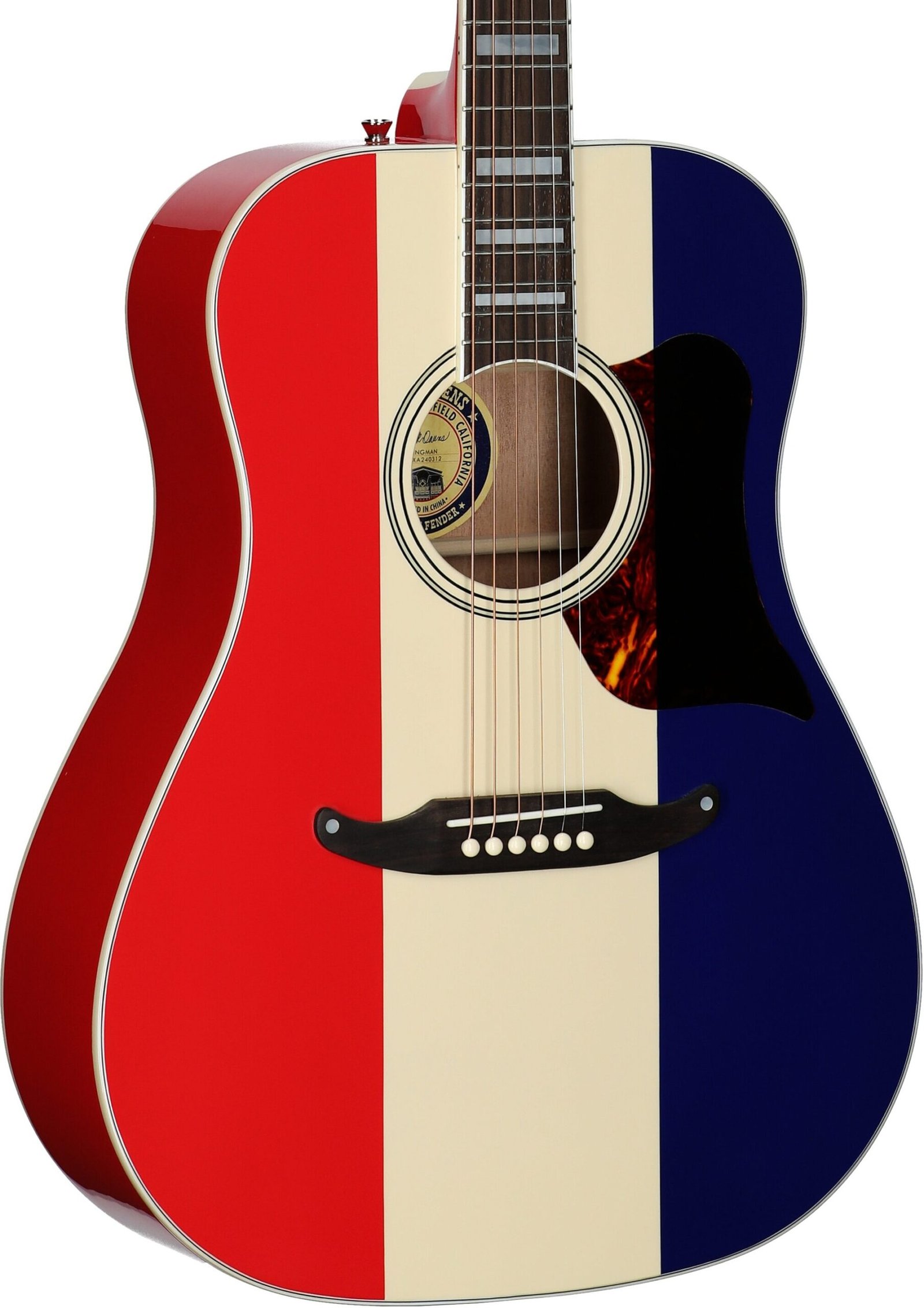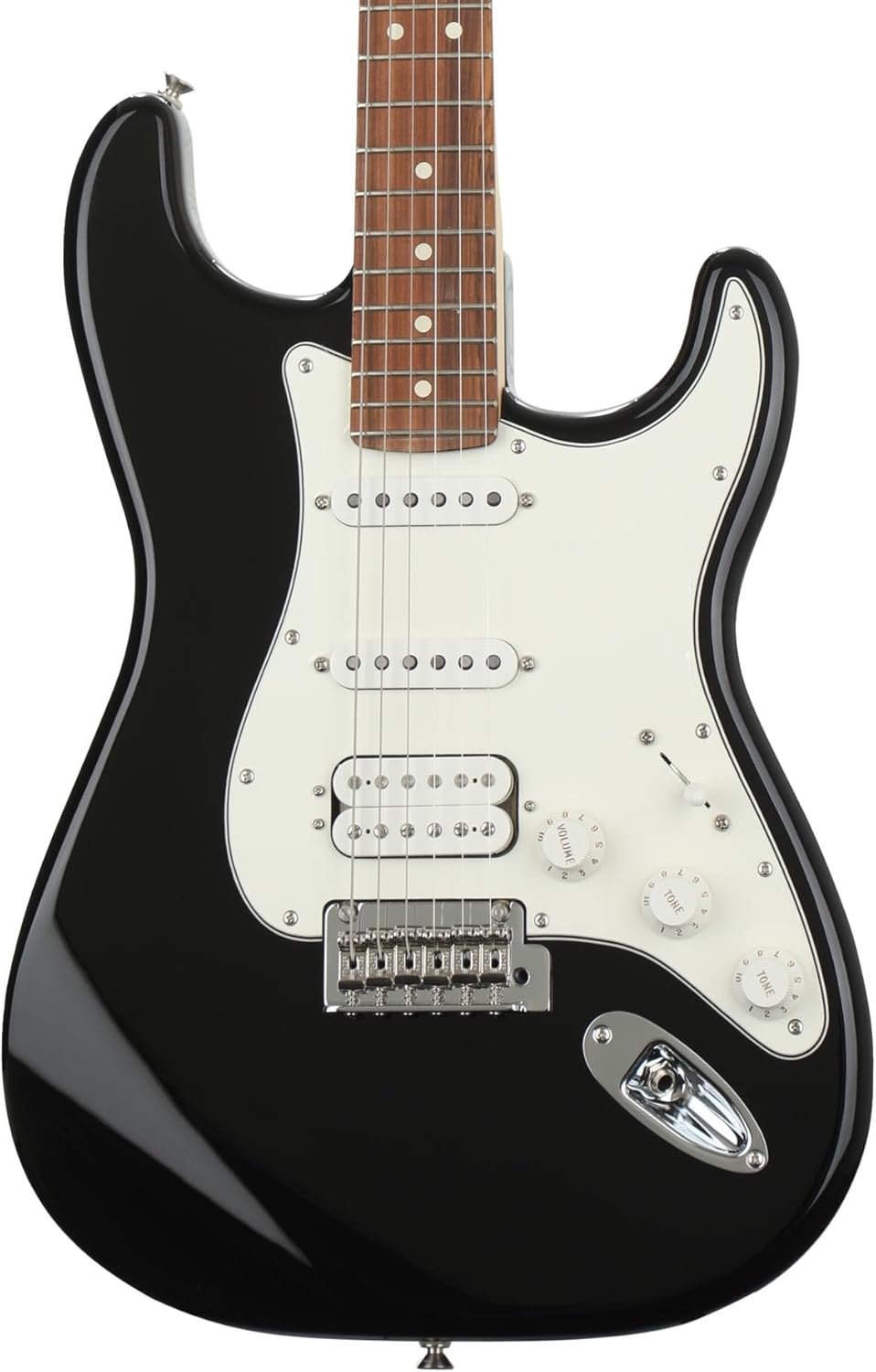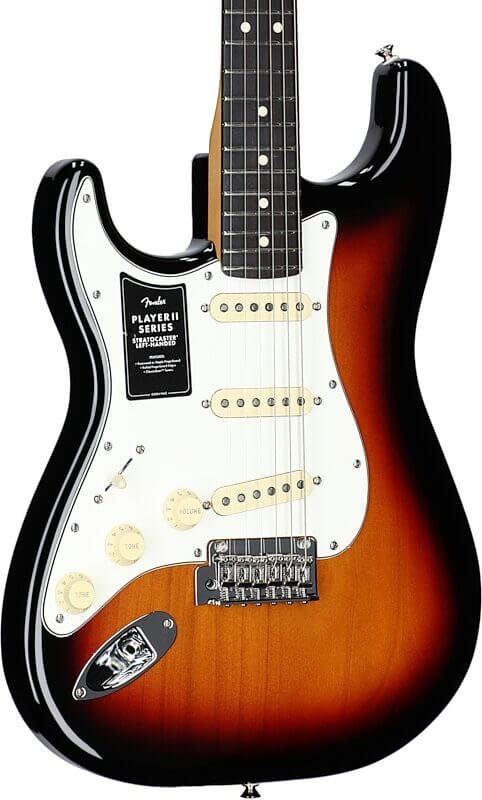Introduction to Guitar Legends
Eric Clapton and Stevie Ray Vaughan are two of the most celebrated guitarists in modern music history, each leaving an indelible mark on the landscape of guitar playing. Clapton, often referred to as “Slowhand,” emerged in the mid-1960s as a member of seminal bands like The Yardbirds, Cream, and Derek and the Dominos. His distinctive blend of blues, rock, and pop styles played a pivotal role in the evolution of these genres. Clapton’s technical prowess and emotive playing have influenced countless musicians, earning him the reputation as one of the greatest guitarists of all time.
Vaughan, on the other hand, rose to prominence in the 1980s, bringing the Texas blues sound to a broader audience. With his powerful guitar solos and passionate performances, he quickly became a pivotal figure in the blues-rock scene. Influenced by guitar legends such as Jimi Hendrix, Albert King, and B.B. King, Vaughan’s style merged traditional blues with an innovative flair. His debut album, “Texas Flood,” marked a significant milestone in blues music and showcased his remarkable talent as a guitarist and songwriter.
The significance of both Clapton and Vaughan extends beyond their technical abilities. Clapton’s influence on rock and blues has been felt through his collaborations and solo work, while Vaughan’s work revitalized interest in the blues genre during a crucial time in music history. Both artists faced personal challenges and triumphs that shaped their careers, adding depth to their narratives and reflecting their resilience within the music industry. Together, their legacies continue to inspire new generations of guitarists and musicians alike, solidifying their status as true legends in the world of guitar greatness.
Eric Clapton: The Master of Blues and Rock
Eric Clapton stands as a towering figure in the annals of blues and rock music, renowned for his extraordinary guitar skills and emotive playing style. With a career spanning over five decades, this virtuoso has navigated various musical landscapes, leaving an indelible mark on both genres. Clapton’s journey began with The Yardbirds, where his innovative guitar techniques began to take shape. His unique approach blended blues and rock elements, setting a precedent that many would later emulate.
Clapton’s time with Cream further solidified his status as a guitar legend. The band is celebrated for its groundbreaking blues-rock fusion, characterized by Clapton’s rapid-fire leads and intricate solos. Songs like “Sunshine of Your Love” and “Crossroads” showcase his talent for crafting melodic riffs that are instantly recognizable. However, it was during the late 1960s and early 1970s that Clapton truly honed his artistry, experimenting with different sounds and styles, which greatly influenced his solo works.
Throughout his solo career, Clapton continued to evolve as a musician. Albums such as “461 Ocean Boulevard” and “Slowhand” demonstrate his ability to blend blues, rock, and pop, appealing to a diverse audience. His cover of Bob Marley’s “I Shot the Sheriff” highlighted his knack for reinterpretation, introducing reggae elements to his guitar repertoire. Clapton’s live performances have also been a significant aspect of his career, illustrating his dynamic stage presence and spontaneous improvisation. Notable shows, like those at the Royal Albert Hall, have left audiences in awe of his technical prowess and emotive expressiveness.
In summary, Eric Clapton’s mastery of the guitar transcends mere technique; it reflects a deep emotional connection to the music. His continued influence on aspiring musicians and established artists alike underscores his legendary status in the worlds of blues and rock.
Stevie Ray Vaughan: The Texas Guitar Hero
Stevie Ray Vaughan emerged from the vibrant Texas music scene, establishing himself as a monumental figure in the world of blues guitar. His explosive playing style combined with a profound technical prowess captivated audiences and musicians alike. Vaughan’s approach to guitar playing drew heavily from the rich blues tradition while incorporating elements of rock, jazz, and even some Texas swing, allowing him to create a distinctive sound that resonated deeply with listeners.
One of the defining characteristics of Vaughan’s music is his intense emotional expressiveness. He employed a unique fingerpicking technique that enabled him to capture the raw emotion found in blues music. His mastery of the guitar also included the use of heavy string bends and vibrant vibrato, which added a signature texture to his performances. Songs like “Pride and Joy” and “Texas Flood” showcase not only his technical skills but also his remarkable ability to convey complex feelings through his instrument.
Vaughan’s rise to fame was a result of both his extraordinary talent and his tireless dedication to his craft. He honed his skills during the late 1970s and early 1980s, performing in local clubs and festivals where he gained a loyal following. His breakthrough came with the release of “Texas Flood” in 1983, which received critical acclaim and propelled him into the national spotlight. Vaughan’s subsequent albums, such as “Soul to Soul” and “In Step,” solidified his place within the pantheon of great guitarists, earning him numerous awards and accolades throughout his career.
The influences that shaped Vaughan’s sound were profoundly rooted in the worlds of blues and rock. He often cited legends like Jimi Hendrix, Albert King, and B.B. King as significant inspirations, drawing from their techniques and styles to inform his own. Vaughan’s legacy continues to inspire generations of guitarists, ensuring that his contributions to the guitar world are remembered and celebrated by fans and musicians alike.
Comparative Guitar Techniques
The guitar techniques employed by Eric Clapton and Stevie Ray Vaughan illustrate the nuances that define their respective styles. Both guitarists are celebrated for their mastery of bending notes, a crucial technique that conveys emotion and depth. Clapton’s approach to bending is often characterized by a smooth, lyrical style, where he uses his fingers with a light touch to achieve a warm tone. This technique allows him to express subtle inflections, enhancing the emotional quality of his solos. On the other hand, Vaughan’s bending technique is typically more aggressive, delivering a sharp, biting sound. He often combines wide bends with heavy vibrato, which adds intensity to his performances, making his guitar work immediately recognizable.
Vibrato is another vital aspect of their playing styles. Clapton utilizes a controlled vibrato, predominantly focusing on slower, more deliberate movements that allow each note to resonate fully. This technique creates an atmosphere that complements his blues and rock influences. In contrast, Vaughan’s vibrato is more pronounced and ferocious, often executed with rapid movements that infuse his playing with a sense of urgency, distinguishing his sound even further from Clapton’s.
Improvisation serves as a vital foundation for their performances. Clapton tends to incorporate jazz influences into his improvisational style, often weaving intricate melodic lines that showcase his sophisticated musicality. His solos frequently center around blues scales, demonstrating a clear understanding of musical theory. In contrast, Vaughan’s improvisation is rooted deeply in the Texas blues tradition. He tends to focus on powerful, high-energy solos filled with rhythmic complexity, creating a captivating dialogue with his fellow musicians. Examining these contrasting techniques highlights how Clapton and Vaughan have sculpted their unique identities within the realm of guitar greatness.
Influences and Inspirations
Both Eric Clapton and Stevie Ray Vaughan are celebrated guitarists whose distinct styles and musical identities were shaped by a range of influences throughout their careers. These artists not only honed their guitar skills but also incorporated various musical elements, adding depth to their artistry. Eric Clapton, often referred to as one of the most important figures in blues and rock music, found inspiration in the works of several musicians. His early admiration for blues legends such as Muddy Waters and Robert Johnson played a pivotal role in developing his fingerstyle techniques and emotive guitar playing. Clapton’s penchant for incorporating elements of rock, folk, and even reggae into his music showcases his diverse influences.
On the other hand, Stevie Ray Vaughan drew heavily from the Texas blues tradition and was influenced by guitarists such as Albert King, Jimi Hendrix, and Freddie King. His admiration for these iconic artists helped Vaughan cultivate his intense and highly energetic guitar style. The use of heavy string bends, aggressive picking, and intricate licks in Vaughan’s performances can be attributed to the influence of his predecessors. Furthermore, Vaughan’s unique ability to blend blues with rock and jazz elements set him apart, allowing him to create a distinct sound that would resonate with generations of music lovers.
Clapton and Vaughan both exhibited the ability to channel their influences into their music creatively. Clapton’s mellow, laid-back blues-infused melodies contrast sharply with Vaughan’s fiery performances, but both musicians share a profound respect for their musical forebears. This reverence is apparent in their live performances and studio recordings, where they pay homage to the artists who shaped their journeys. Ultimately, the influences and inspirations that have guided Clapton and Vaughan not only reflect their personal journeys but also underscore the interconnectedness of the broader music landscape.
Legacy and Impact on Future Generations
Eric Clapton and Stevie Ray Vaughan have each left a profound mark on the music industry, influencing countless aspiring guitarists and musicians who followed in their footsteps. Their innovative techniques and distinctive styles have become touchstones for players seeking to develop their own sound. Clapton, often hailed as one of the greatest guitarists of all time, has incorporated various genres, including blues, rock, and pop, into his work. His ability to fuse these styles has not only shaped the landscape of contemporary music but also inspired a generation of musicians to experiment with genre-bending sounds.
Stevie Ray Vaughan, on the other hand, revived and redefined blues music in the late 20th century. His ferocious guitar playing combined with passionate vocal delivery has made a significant impact on both blues and rock genres. Emerging artists frequently cite Vaughan as a primary influence, often emulating his fierce playing style and emotional depth. His powerful performances and dedication to the craft have served as a motivational force for guitarists, inspiring them to invest time and effort into honing their skills.
Both Clapton and Vaughan have actively contributed to music education, engaging in mentorship roles throughout their careers. Clapton established the Crossroads Centre, a treatment facility that not only aids those battling addiction but also supports music education initiatives. Vaughan’s legacy lives on in the many musicians he inspired through workshops, live performances, and recordings, where his techniques and approaches can be studied and appreciated. Today, their artistic contributions continue to resonate across multiple genres, ensuring their legacies endure. As a result, aspiring musicians are encouraged to refine their craft while also promoting a sense of community within the guitar-playing world.
Fan Base and Cultural Relevance
Eric Clapton and Stevie Ray Vaughan, both titans in the realm of guitar playing, have cultivated distinct yet passionate fan bases over the years. Clapton, often hailed as one of the most influential guitarists in rock and blues history, has attracted a diverse range of fans. His ability to meld various musical styles, combining blues, rock, and pop, has resonated across generations. Throughout his career, Clapton’s collaborations with other artists and iconic bands, such as Cream and The Yardbirds, have further entrenched his cultural relevance. His signature songs, like “Layla” and “Tears in Heaven,” continue to be radio staples, ensuring his music remains prevalent in contemporary society.
On the other hand, Stevie Ray Vaughan’s approach to music appealed to a different segment of listeners, especially those drawn to the raw, electric intensity of blues. Vaughan’s playing style, characterized by his fiery licks and heartfelt performances, carved out a dedicated following, particularly during the blues revival of the 1980s. Songs like “Pride and Joy” and “Texas Flood” became anthems for many blues enthusiasts, allowing Vaughan to leave an indelible mark on the genre. His untimely death in 1990 solidified his status as a legendary figure, fostering a reverence among fans and musicians alike.
In popular culture, Clapton often emerges as a seminal figure, frequently referenced and celebrated in various forms of media. His influence extends into the music community, inspiring countless guitarists. Conversely, Vaughan’s cultural impact has been significant, with many contemporary guitarists citing him as a foundational influence in blues-rock. Both artists represent divergent yet equally vital strands of the guitar narrative. Their music, characterized by emotional depth and technical prowess, resonates profoundly, solidifying their places in the annals of musical history.
Rating Their Guitar Skills: Clapton vs. Vaughan
When evaluating the guitar skills of Eric Clapton and Stevie Ray Vaughan, one must consider various factors such as technical abilities, creativity, and their overall influence on the guitar world. Each artist has carved a unique niche in the music industry, yet their styles and approaches are markedly different, which can complicate any comparative assessment.
Starting with Eric Clapton, his technical prowess is evidenced by his seamless blend of blues and rock. Clapton’s use of pentatonic scales, coupled with his expressive bending techniques, enables him to convey deep emotional resonance in his playing. His early involvement with the Yardbirds and Cream showcased his innovative riffs and solos, which have influenced countless guitarists since. Based on his extensive contributions to guitar technique and song composition, Clapton merits a rating of 9/10. His ability to adapt and evolve throughout his career, while maintaining recognition as a guitar icon, further solidifies this score.
On the other hand, Stevie Ray Vaughan’s guitar skills are equally commendable, though his focus leans heavily on the Texas blues style. Vaughan’s mastery of the Stratocaster and his dynamic, powerful playing set him apart. His intricate fingerwork and energetic live performances demonstrate technical skill that is both raw and refined. Songs such as “Pride and Joy” exhibit his unique flair for combining blues elements with rock sensibilities. Given his outstanding contributions to the modern blues genre and the emotional depth of his music, Vaughan earns an 8.5/10 rating. His untimely passing leaves a legacy that remains impacting, yet his time in the spotlight was shorter than Clapton’s, influencing the final score.
Ultimately, while one may prefer Clapton’s expansive catalog or Vaughan’s electrifying performances, each guitarist’s significance in the guitar domain is undeniable. Personal taste will vary, and one’s choice may come down to style preference or emotional connection to their music.
Conclusion: Celebrating Their Unique Contributions
In exploring the legacies of Eric Clapton and Stevie Ray Vaughan, it is evident that both guitarists have made profound contributions to the landscape of music. Their distinct styles and innovative approaches to guitar playing have left an indelible mark on blues and rock genres. Clapton, often dubbed “Slowhand,” is revered for his smooth, soulful melodies and ability to imbue traditional blues with a sense of emotional depth. His journey through various musical phases—from Cream’s electrifying performances to his rich solo career—showcases his evolution as an artist and guitarist. His influence not only advanced the blues-rock hybrid but also set a new standard for aspiring musicians worldwide.
On the other hand, Stevie Ray Vaughan emerged as a powerhouse of raw energy and technical prowess. His passionate performances were characterized by fiery solos and intricate fingerpicking, combining elements of Texas blues with an electrifying stage presence. Vaughan’s brief but impactful career led to a resurgence of interest in blues music during the 1980s, inspiring countless guitarists to adopt his innovative techniques and embrace the genre. Furthermore, Vaughan’s ability to connect with audiences through his heartfelt lyrics and emotional delivery has solidified his status as a true legend in the realm of guitar mastery.
Both Clapton and Vaughan contributed uniquely to the evolution of guitar playing, each carving out a space that reflects their individual artistry. Eric Clapton’s melodic finesse and Stevie Ray Vaughan’s fiery creativity not only enrich the musical tapestry but also continue to inspire future generations of musicians. As we celebrate their distinct yet complementary contributions, it is important to recognize and appreciate the unique qualities that each artist brought to the world of music, ensuring their legacies endure for the ages.



